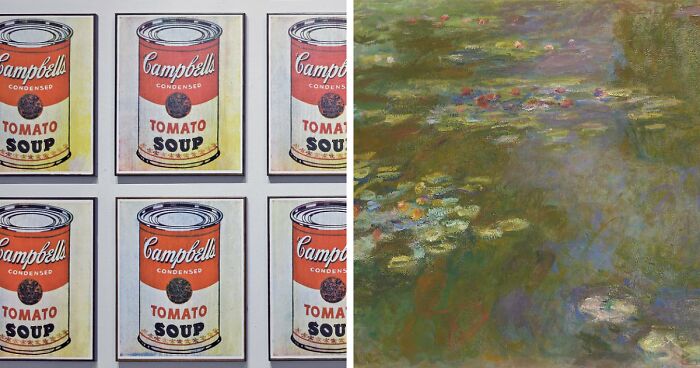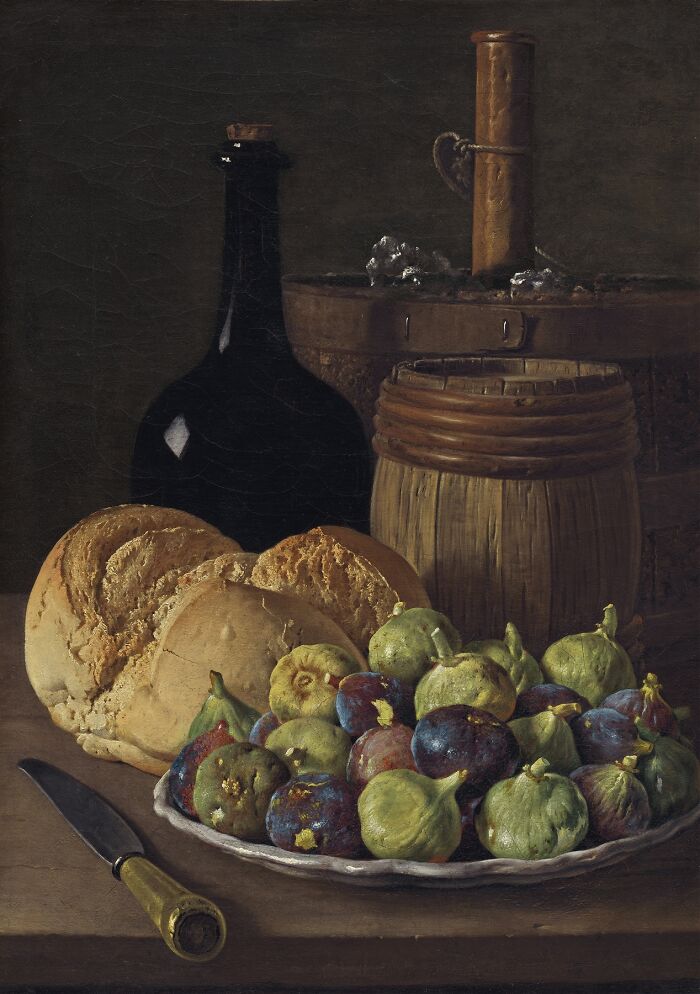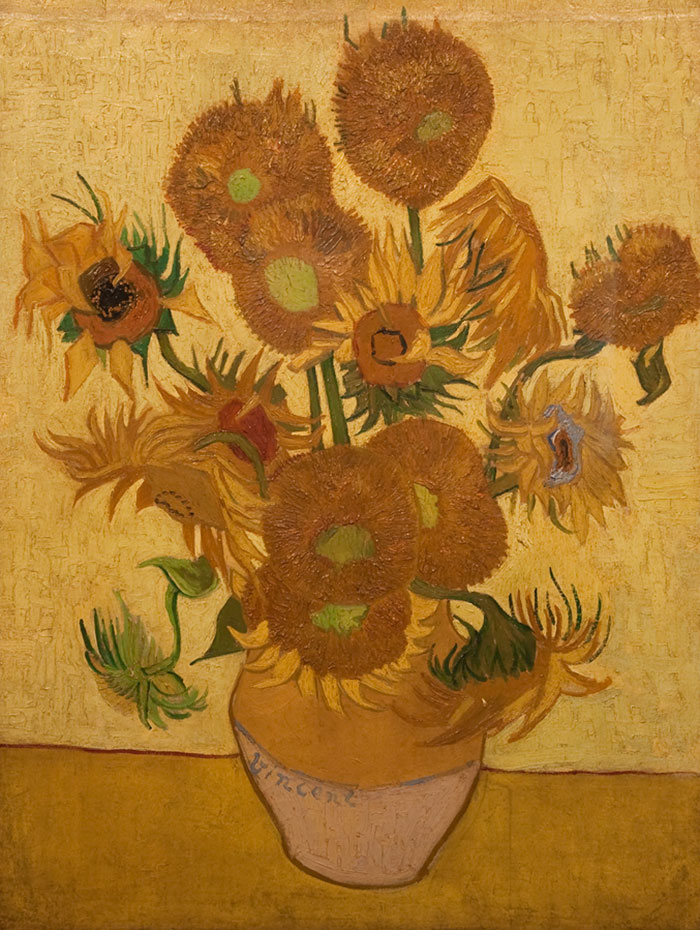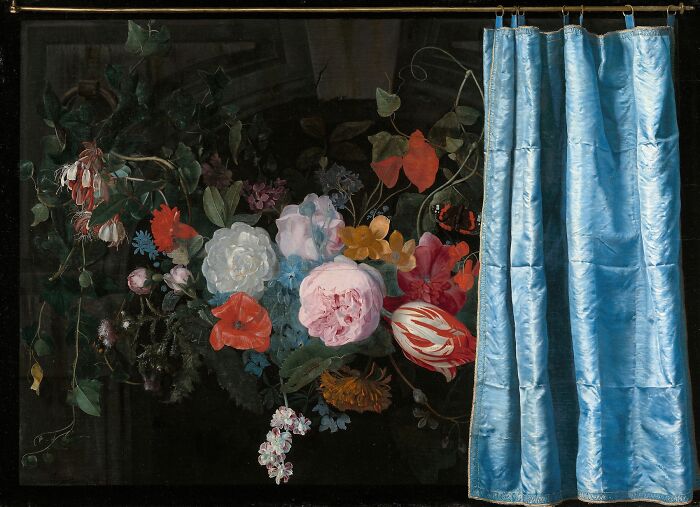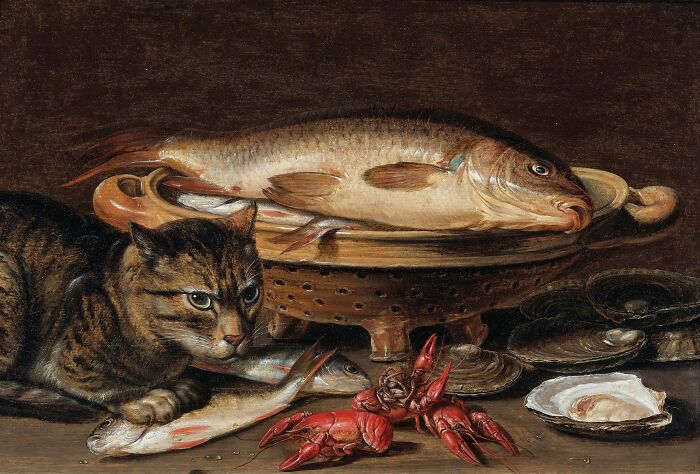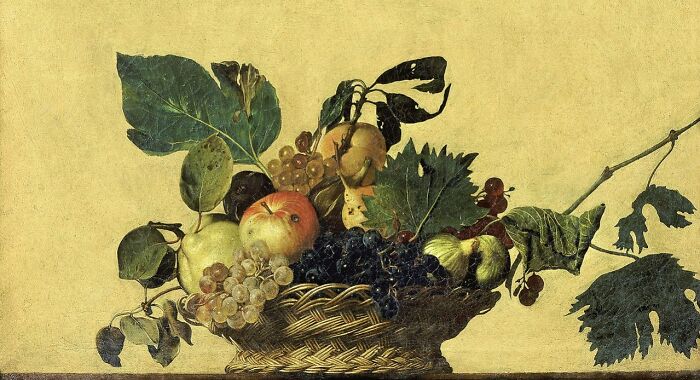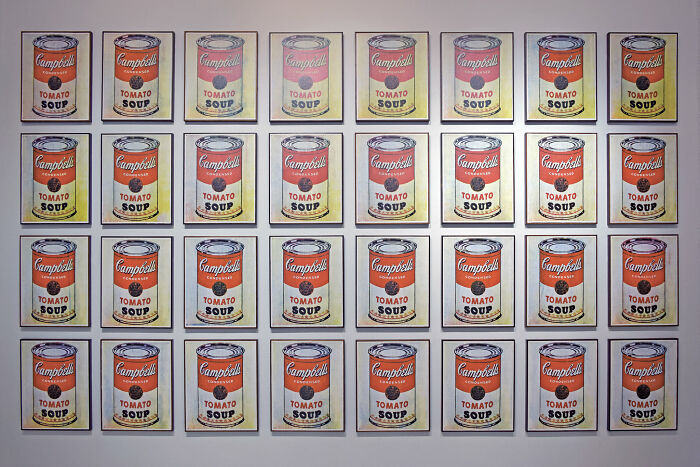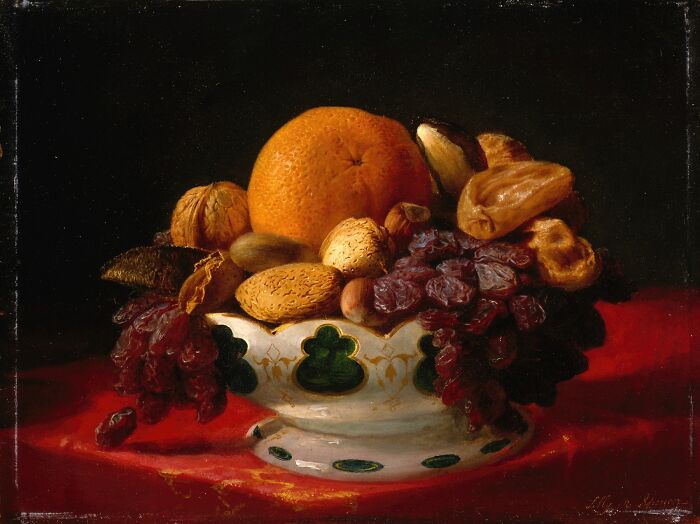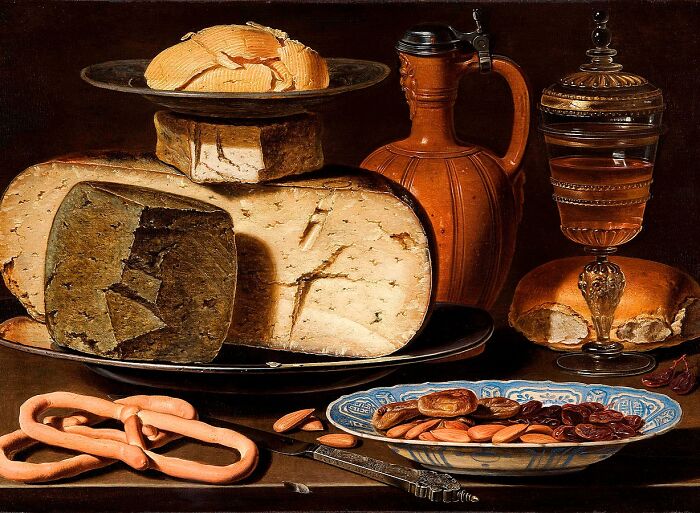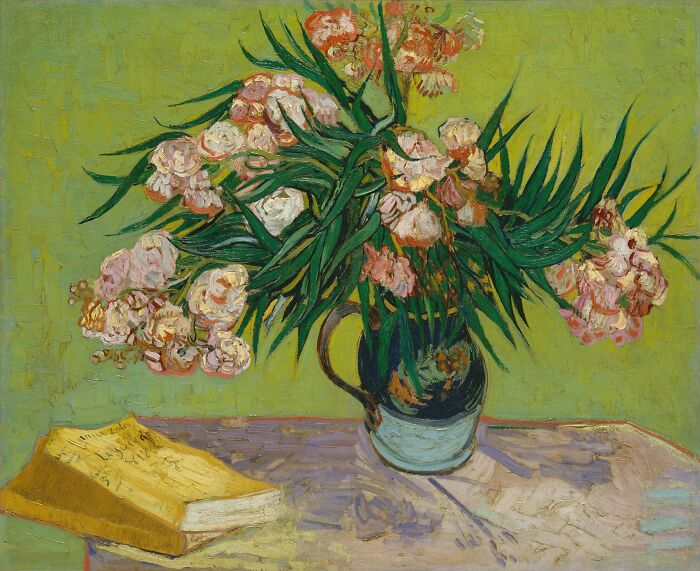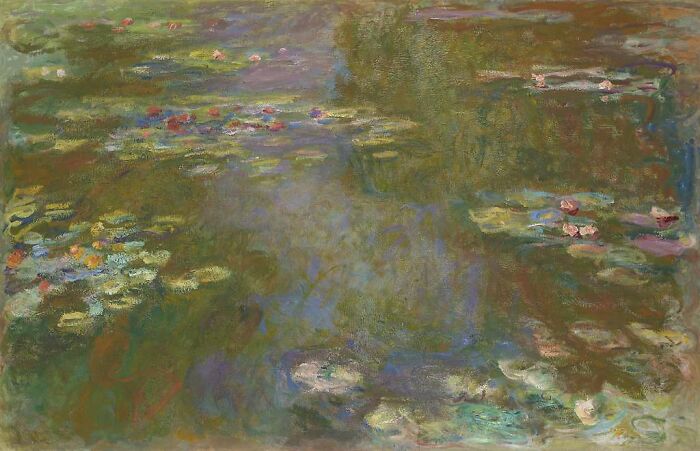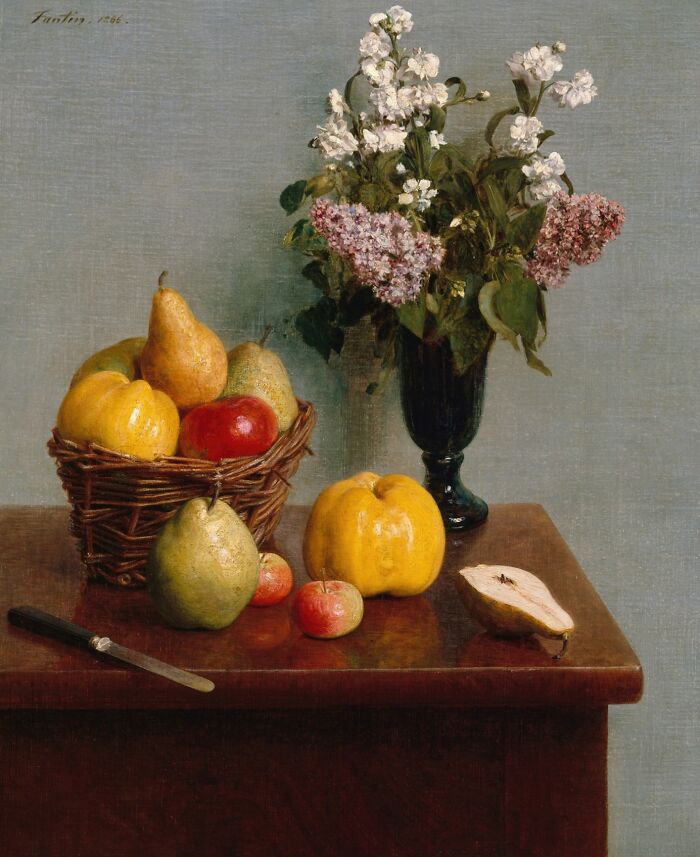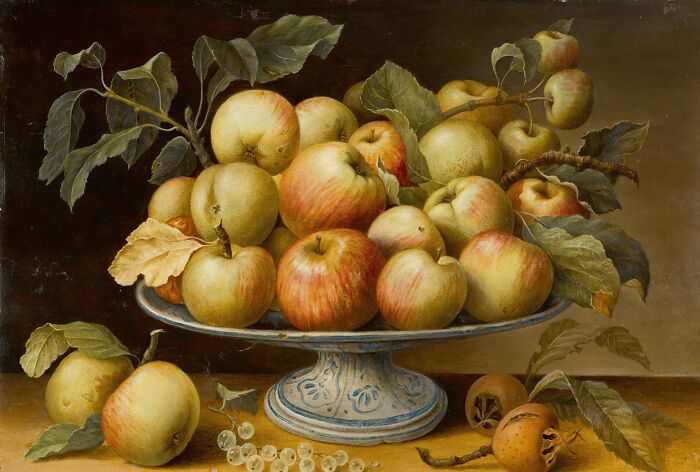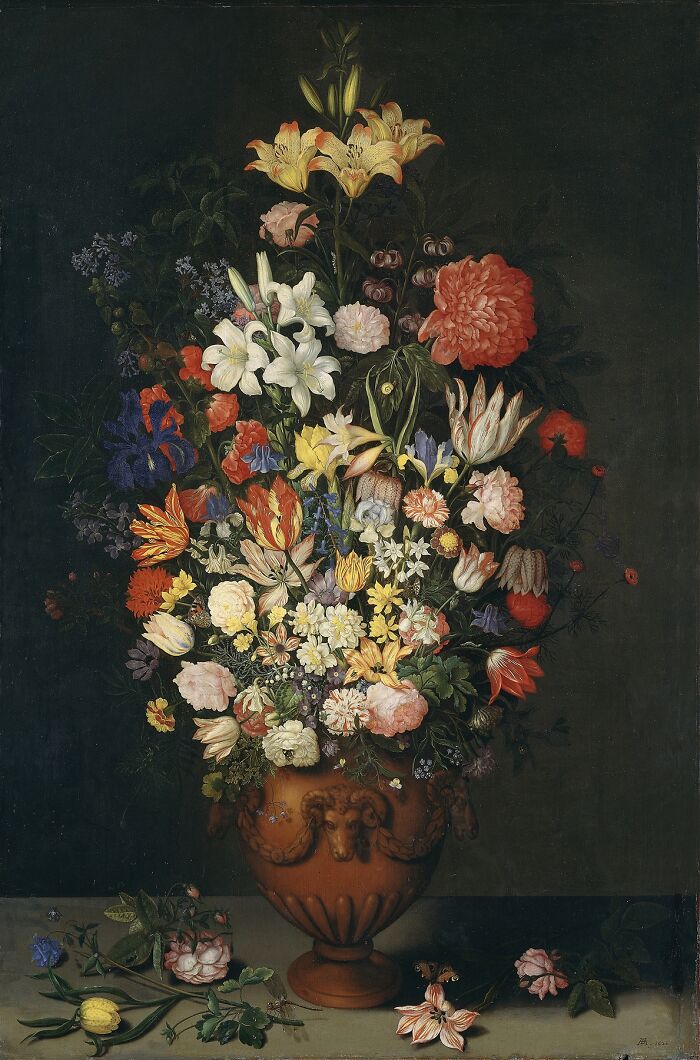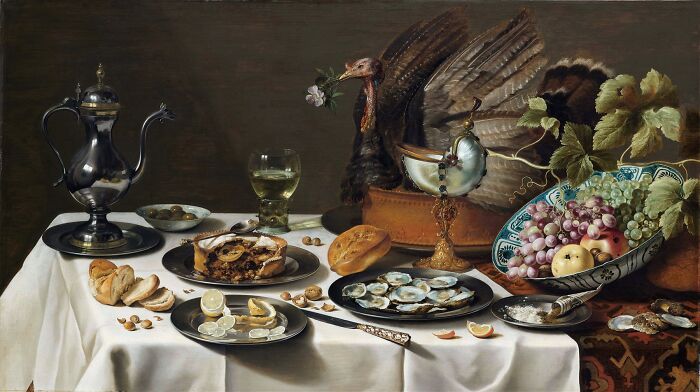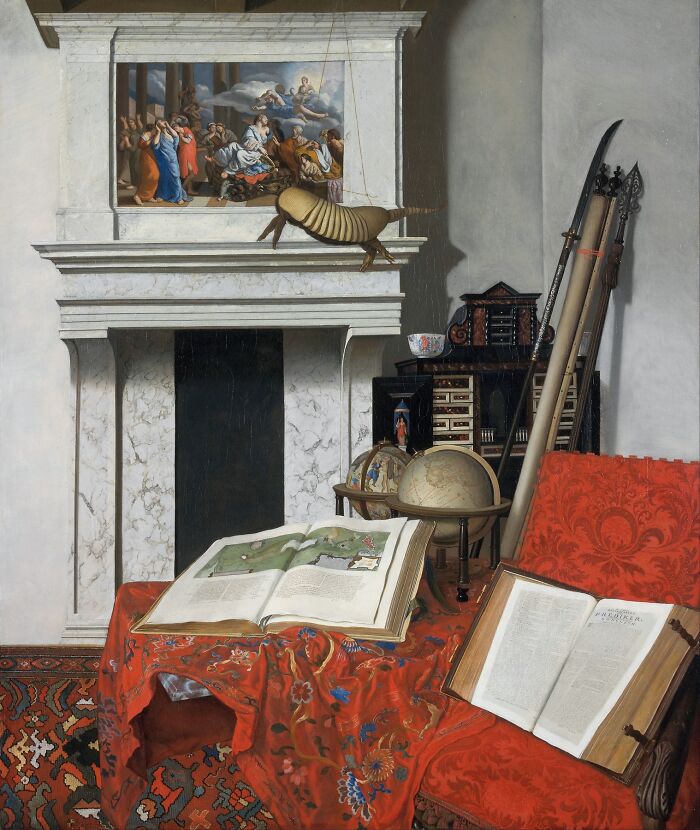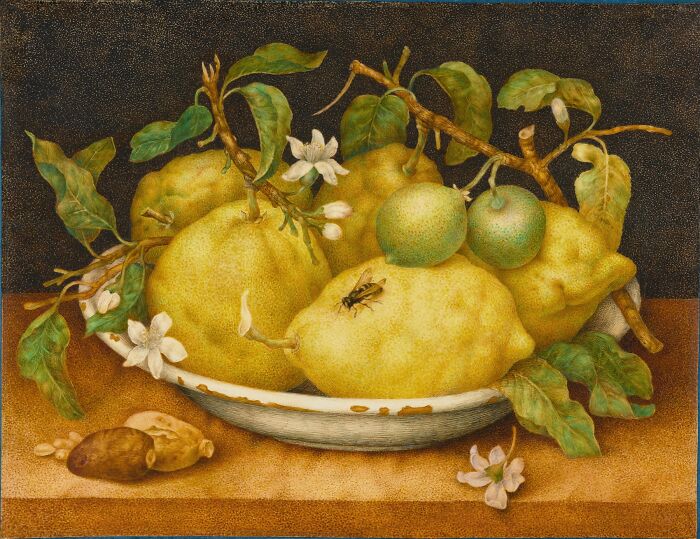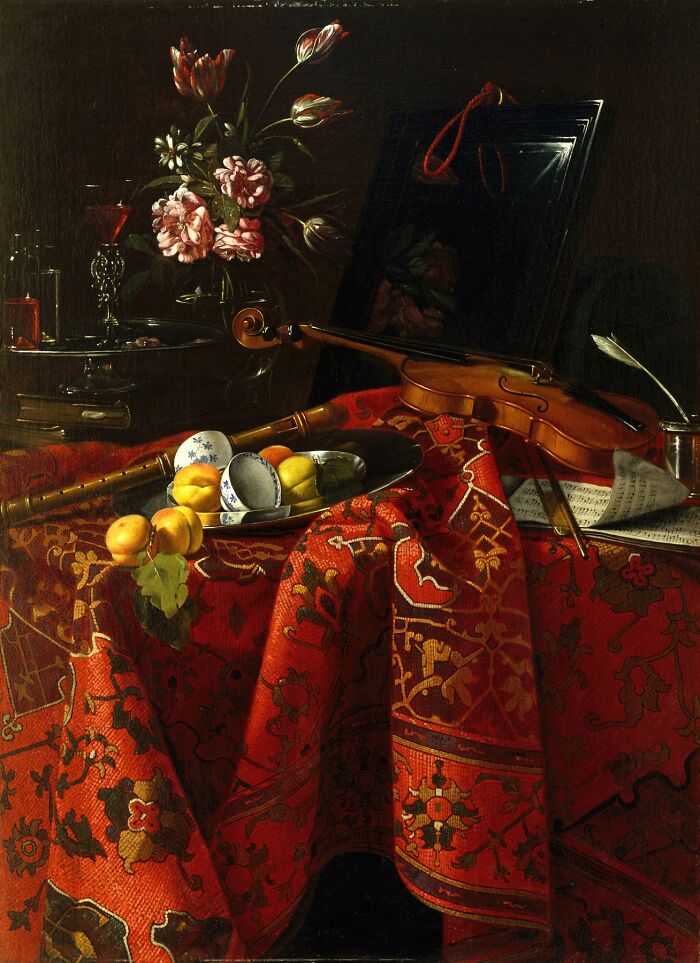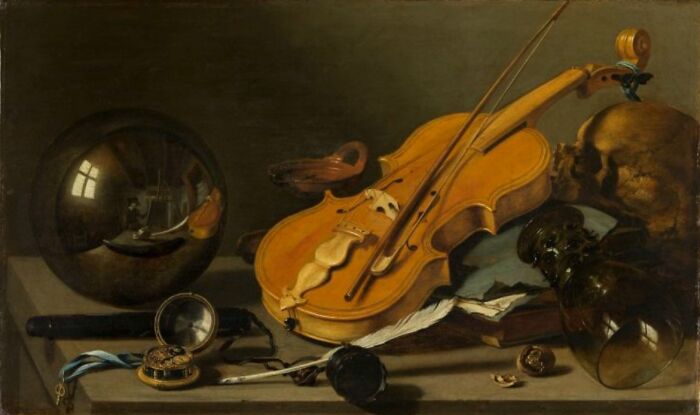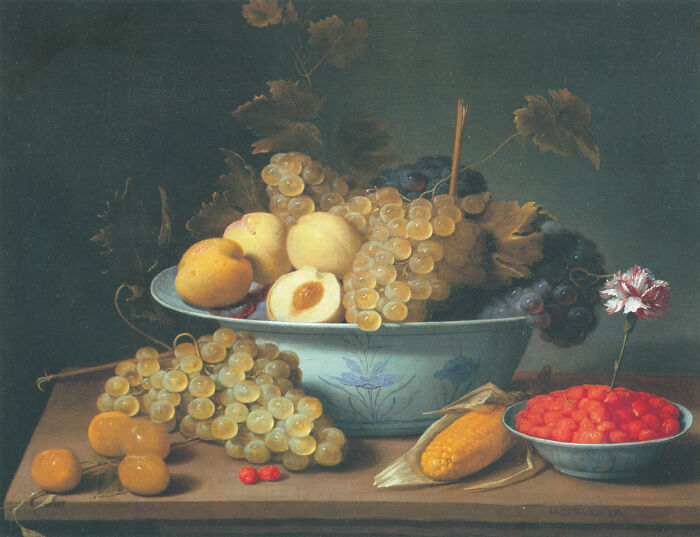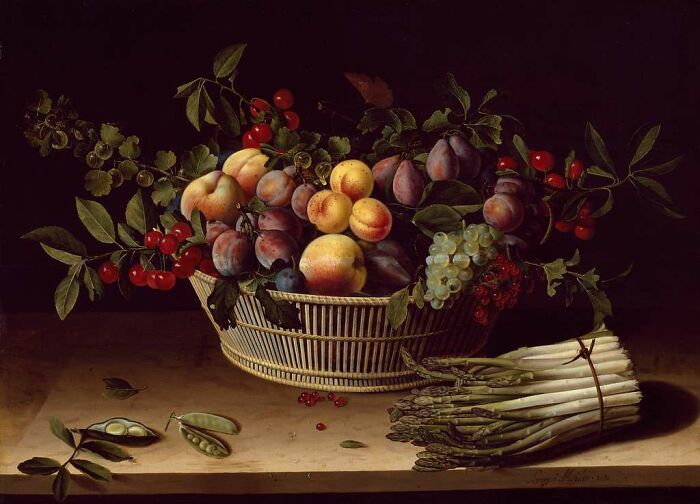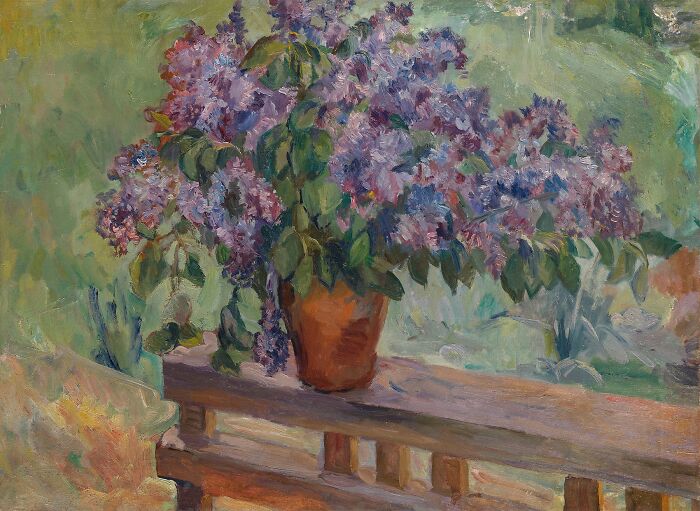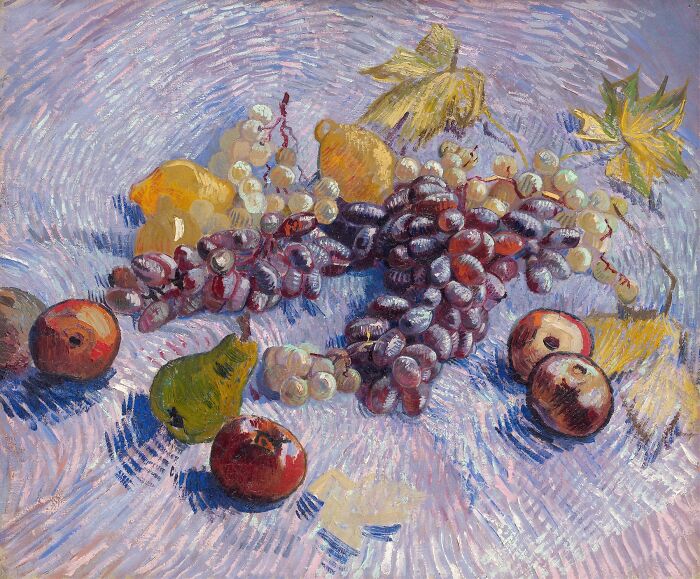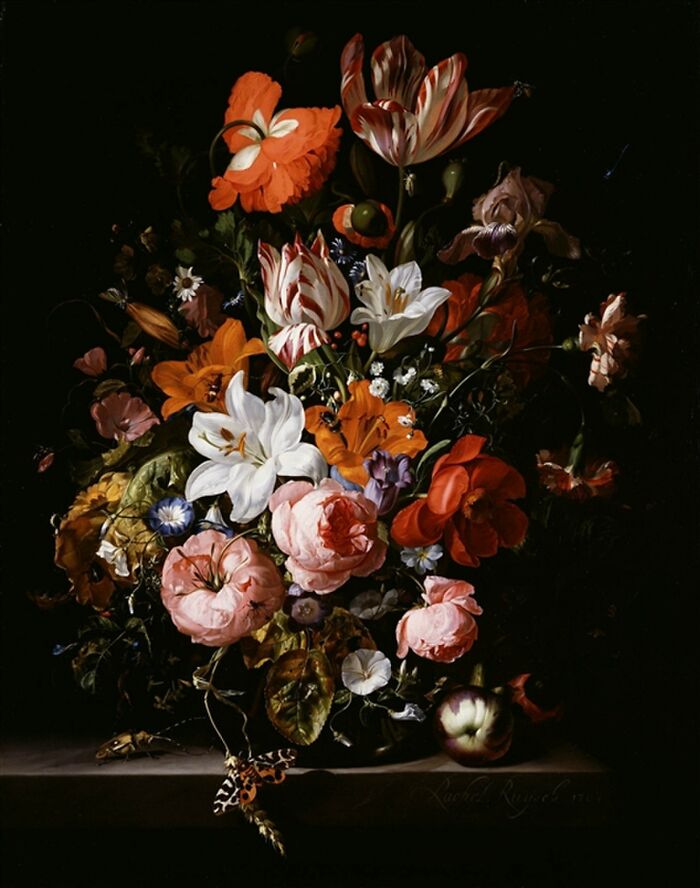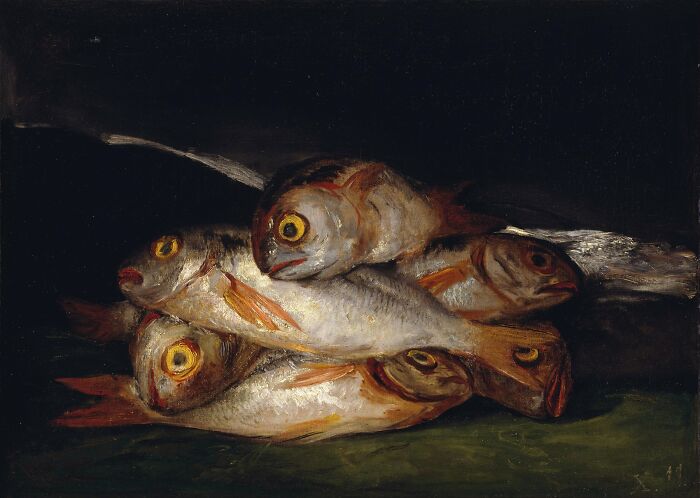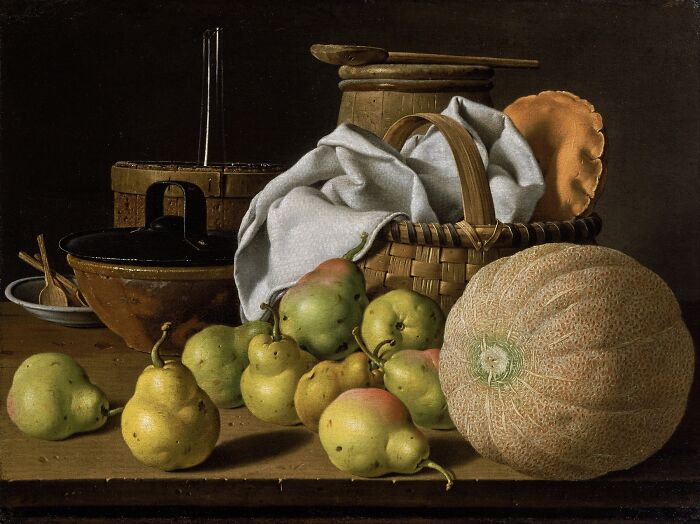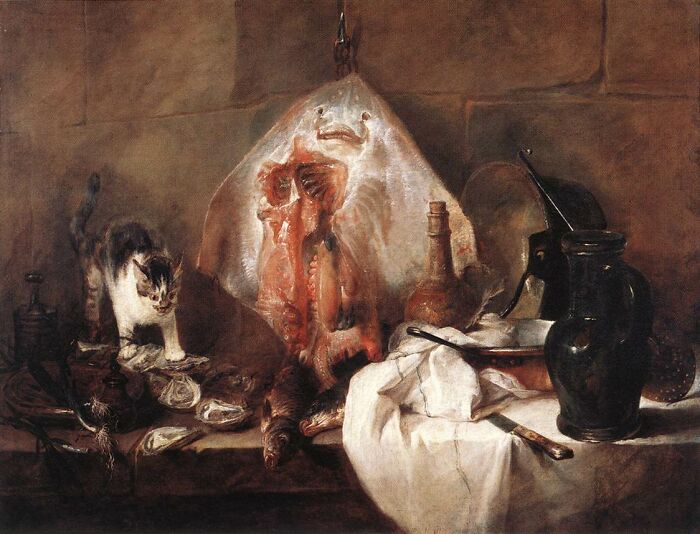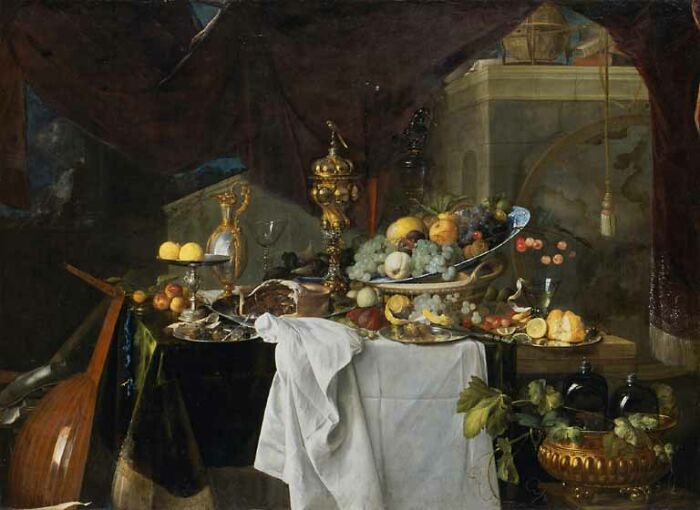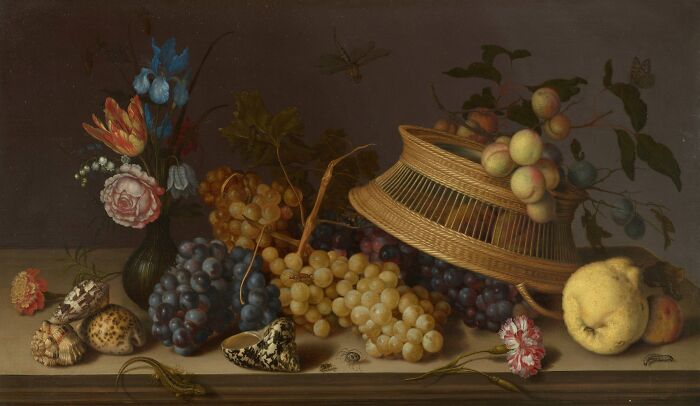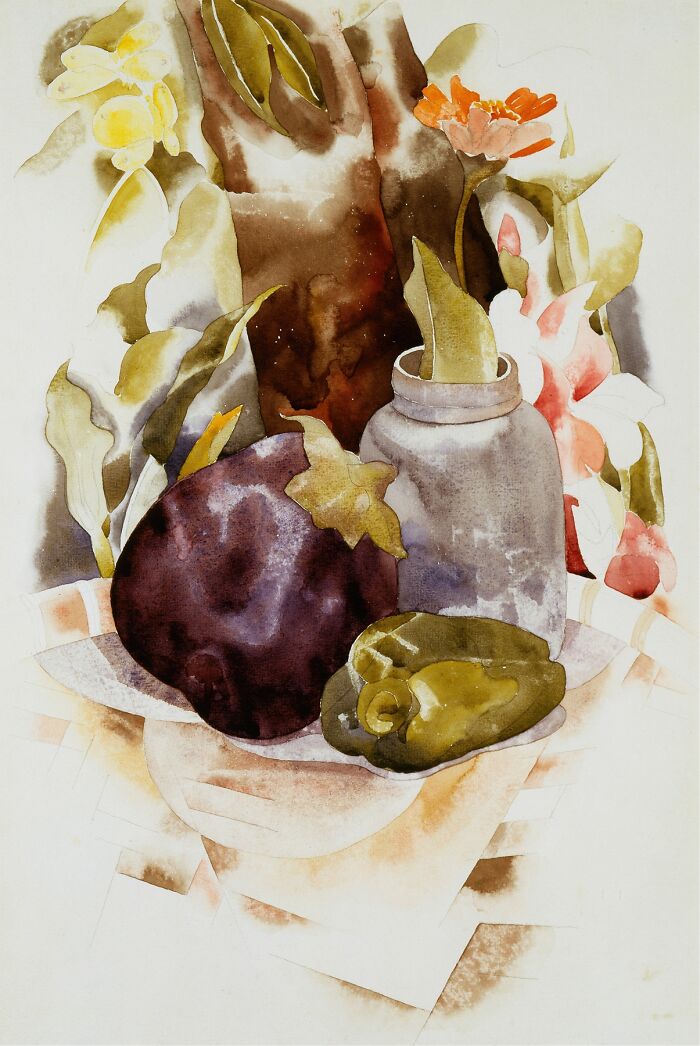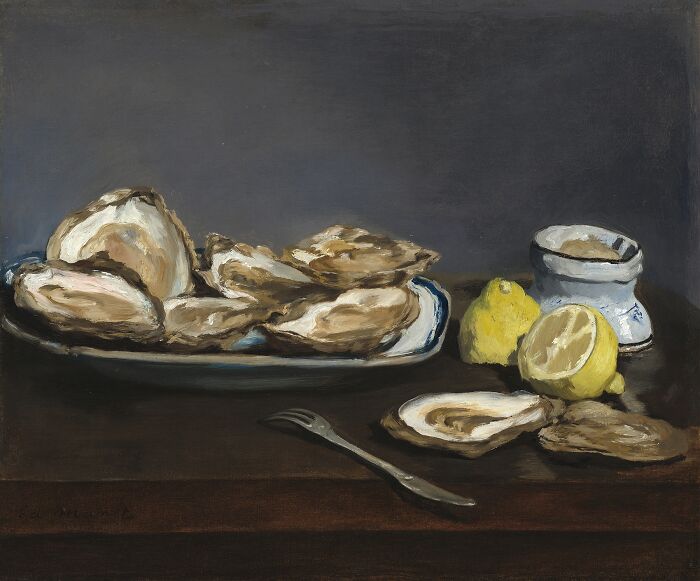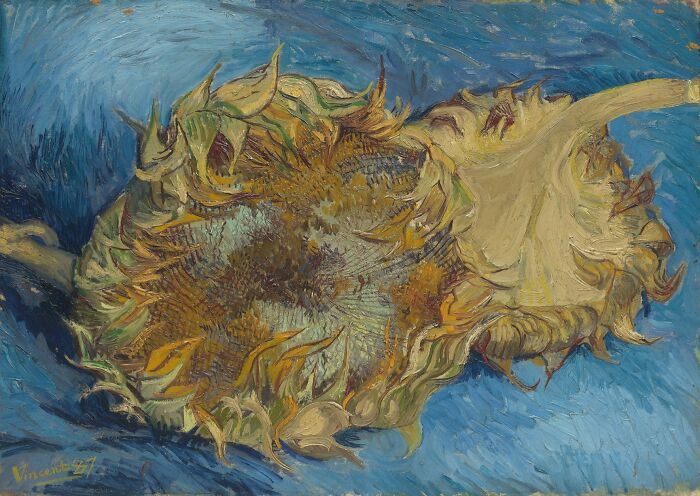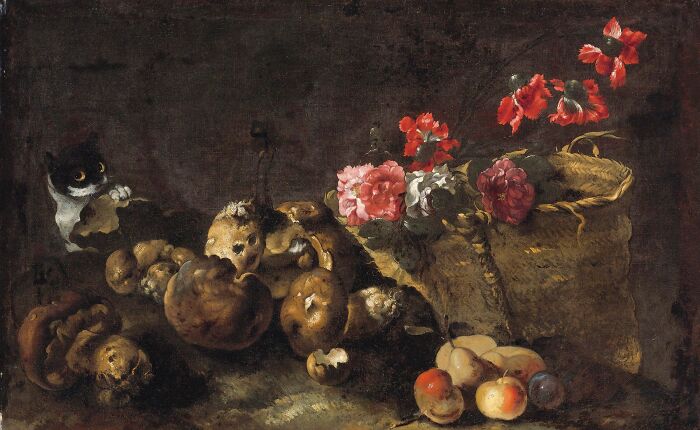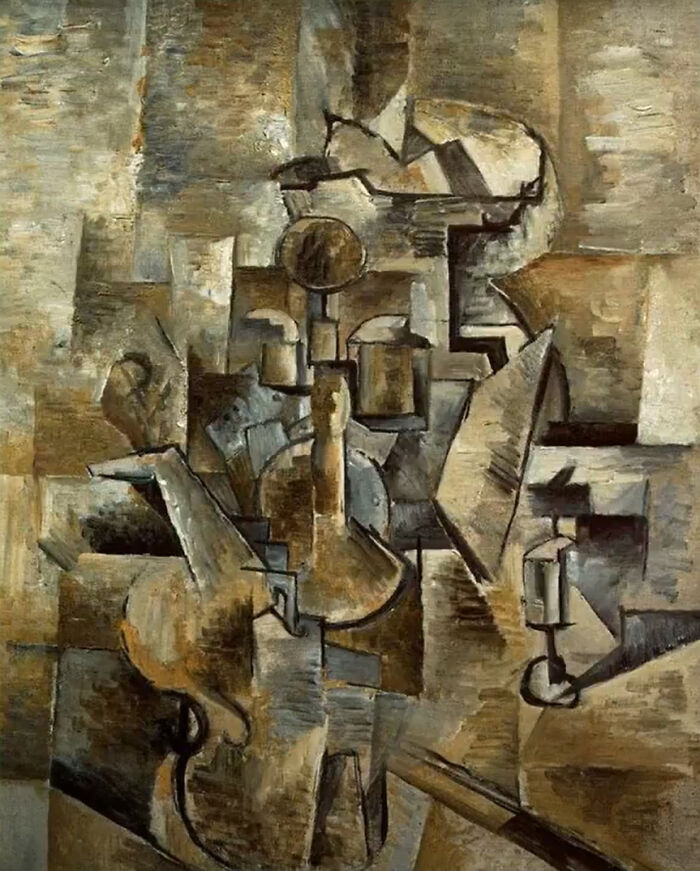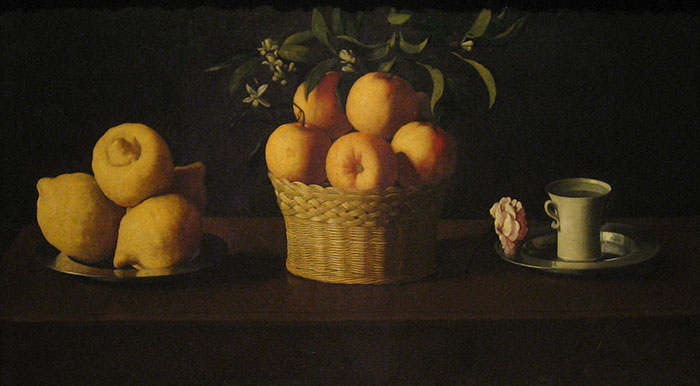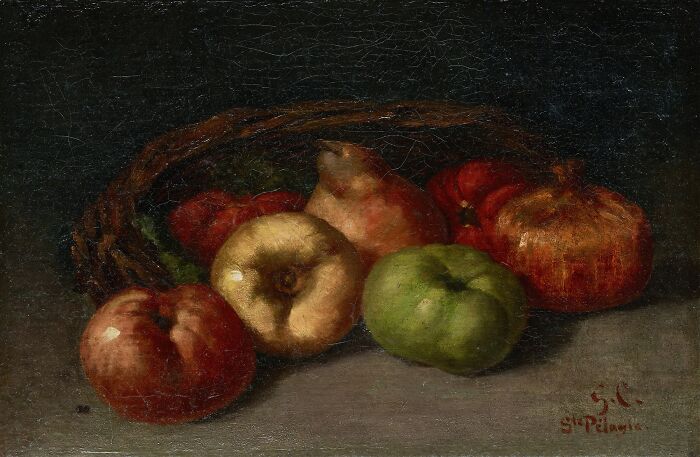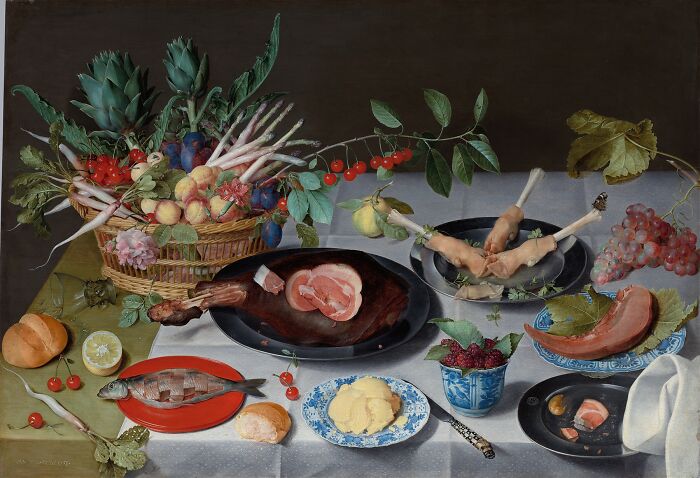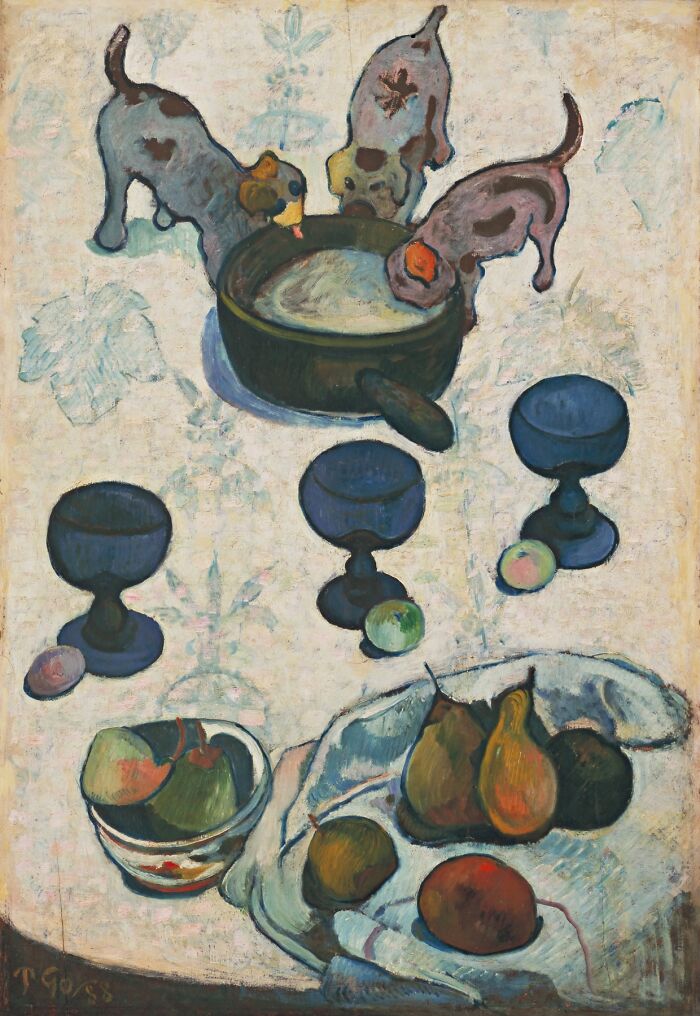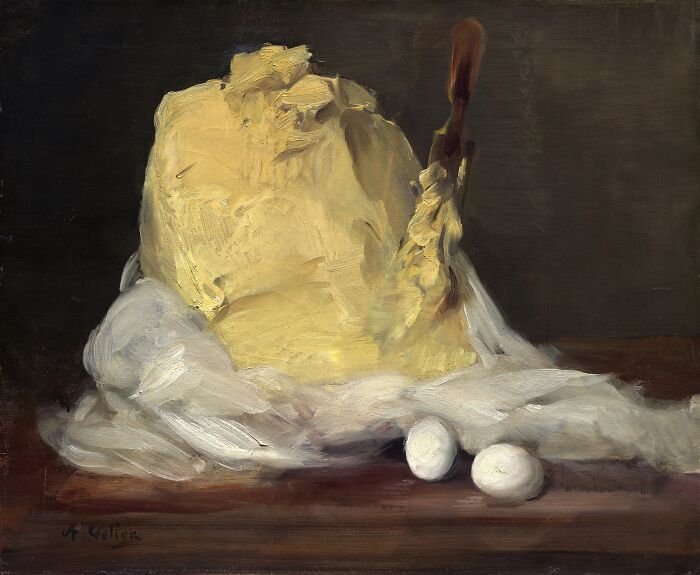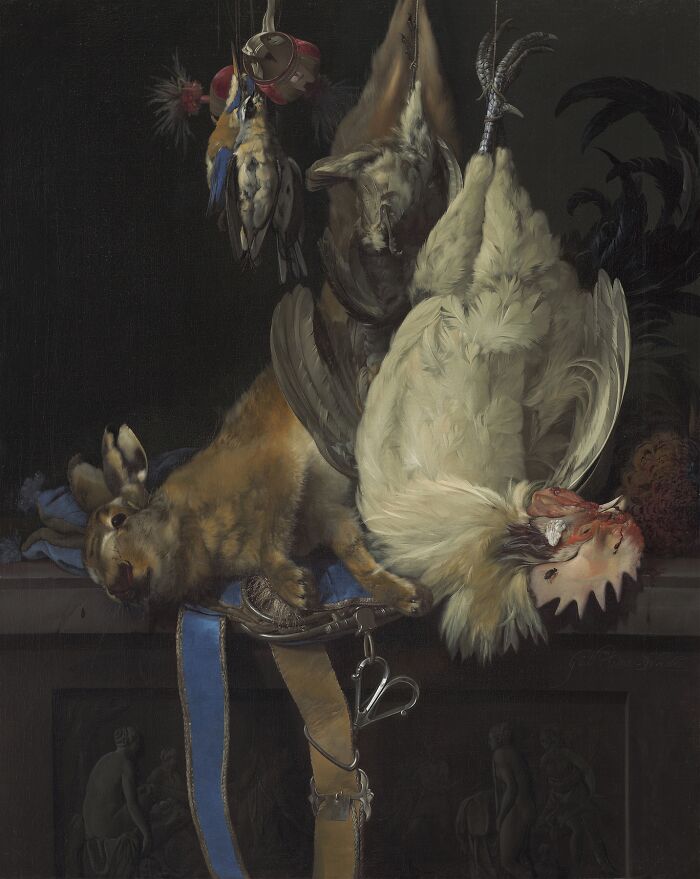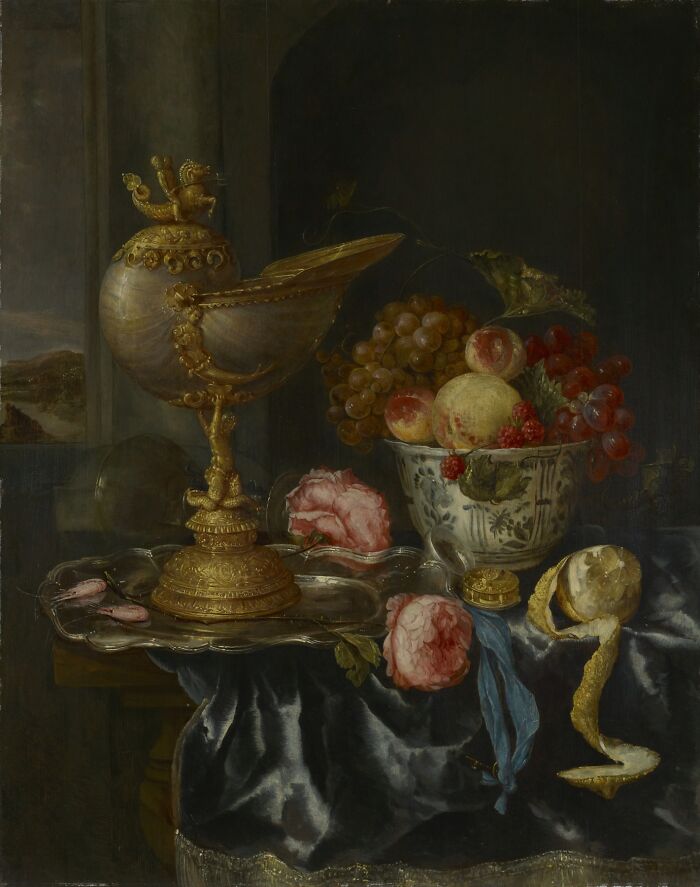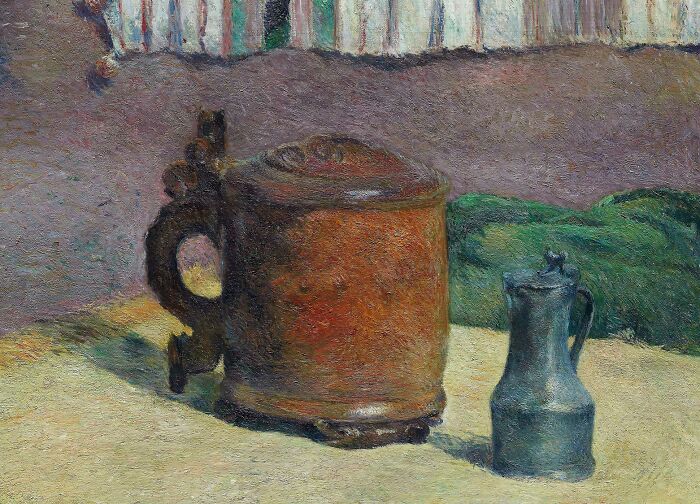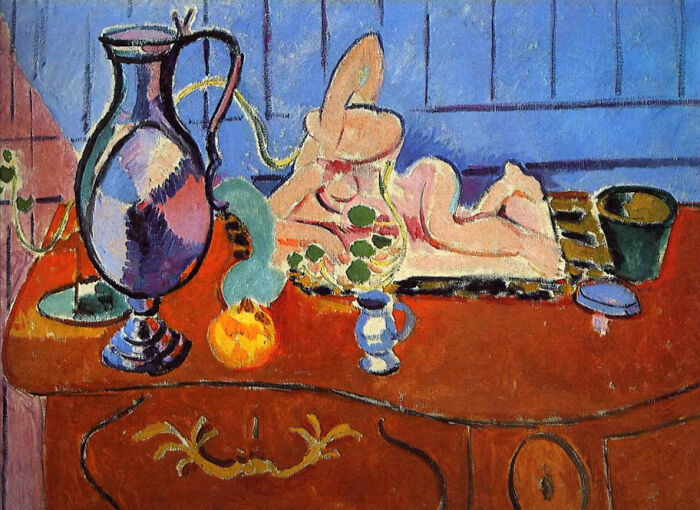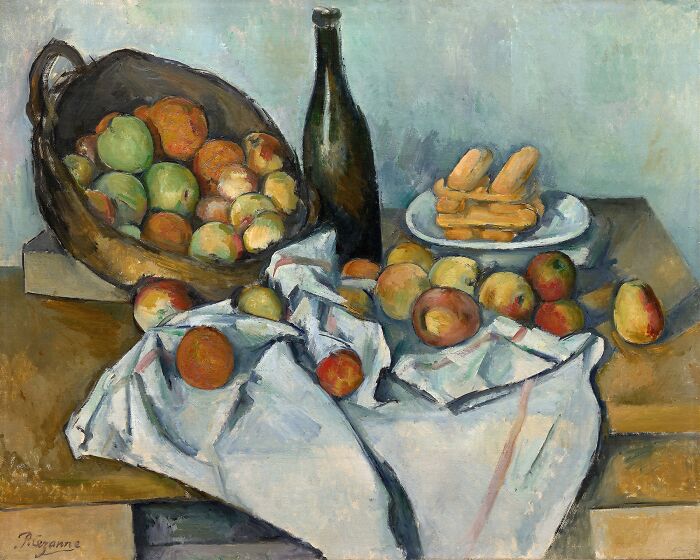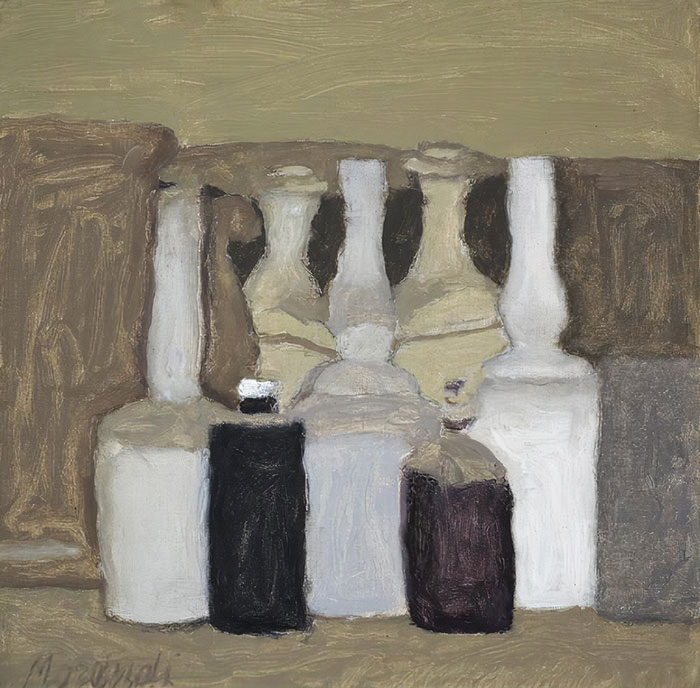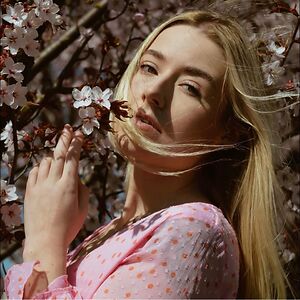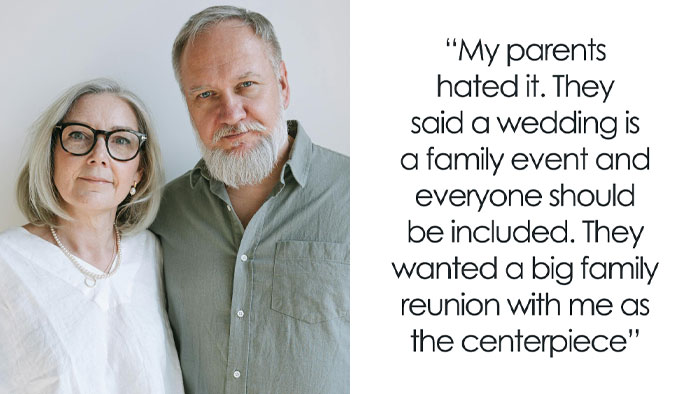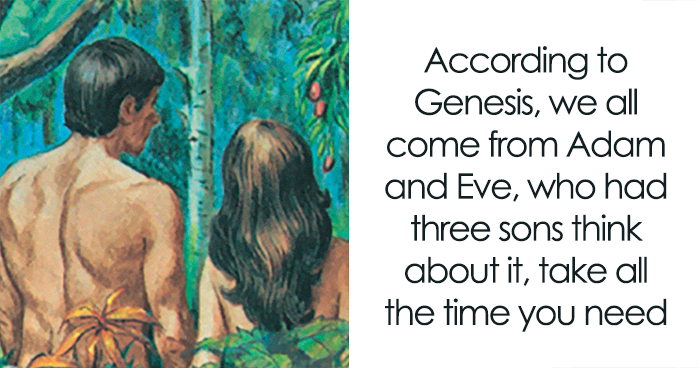Those unfamiliar with art history may wonder, what makes a painting still life? Well, a still-life painting may feature a variety of items arranged in a specific (or disorganized) way. Sure, inanimate object layouts have been depicted by artists since the beginning of time. In fact, the interiors of ancient Egyptian tombs frequently featured still-life paintings!
However, it wasn’t until Dutch and Flemish artists captured elaborate arrangements of everyday household objects in the late 16th century that still-life paintings emerged as a separate genre. It was the collective impact of the many artisans of the time who started producing artworks that today are regarded as the most famous still-life paintings in art history.
Thanks to the pioneers of still life, the genre quickly took off and gained popularity in both Europe and the US. At the beginning of the 18th century, still-life paintings as an independent genre also appeared in Russia. The 17th to 19th century was arguably the time when some of the most famous still-life paintings in the genre were created.
Whether a fruit still-life painting or a flower still-life painting, with still life, each artist was able to present a unique interpretation of the objective arrangement of multiple objects. Inspired by the novelty, some of the most famous paintings emerged from the many ateliers, inspiring both current generations of the time and the generations of artists that followed.
Below, we’ve compiled the many still-life paintings by famous artists that formed and shaped the genre and are now regarded as some of the most famous paintings in history. Any famous still-life painting that particularly caught your attention? Make sure to give it an upvote. Do you have anything else to add about the artwork or the genre? Share your thoughts in the comments!
This post may include affiliate links.
Still Life With Figs And Bread By Luis Meléndez
Artist: Luis Meléndez | Year (completed): 1770
Luis Meléndez is regarded as one of the greatest still-life painters in all of Europe and the greatest still-life painter of 18th-century Spain. Several components in Meléndez's Still Life with Figs and Bread are typical of the master's works. His skill at accurately portraying commonplace objects is evident, as are his excellent color and light effects, which typically emanate from the left. A kitchen knife with a bone handle protrudes into the area between the observer and the rough, wooden tabletop. From the platter of green and purple figs to the crusty bread, a small barrel and wine flask, and then a cork keg or cooler, the observer's eye is guided in a zigzag pattern.
“Our bakery doesn’t just churn out loaves of industrial Wonder bread. We make bread like in the Old Masters still life paintings. That’s it! We’ll call it ‘artisinal!’”
Sunflowers By Vincent Van Gogh
Artist: Vincent van Gogh | Year (completed): 1889 | Period: Post-Impressionism
The paintings of sunflowers are some of Van Gogh's earliest works from Arles that exhibit his distinctive, expressive style. There, Vincent van Gogh painted a set of canvases portraying sunflowers in just three different shades of yellow. With this approach, he attempted to demonstrate that creating an elegant still-life oil painting was possible while playing with just variations of one color 'and nothing else.'
This painting seems subdued compared to the exuberant colour of much of his work. I wonder if the yellow pigment he used faded over time? Like Gamboge or something?
Trompe-L'oeil Still Life With A Flower Garland And A Curtain By Adriaen Van Der Spelt
Artist: Adriaen van der Spelt | Year (completed): 1658 | Period: Baroque
While many early still-life painters concentrated on fruits, vases, and pitchers, Adriaen van der Spelt painted a striking scene of a big floral garland subdued by an incredibly realistic curtain on the right of the canvas. Because of the meticulous attention to detail, it has become one of the most renowned still-life paintings ever produced. The importance of the flowers appearing on the left side being withered while those near the middle are filled with vitality has been noted by many art aficionados and critics. This makes the observers curious about what is happening behind the mysterious curtain.
Still Life With Fish And Cat By Clara Peeters
Artist: Clara Peeters | Year (completed): 1620 | Period: Baroque
Clara Peeters was one of the relatively few active female painters in 17th-century Europe. Although there is no proof of her background, experts think the artist was a student of the well-known Antwerp still-life painter Osias Beert. By 1612, Peeters was painting numerous realistic still lifes that typically included collections of priceless items that she arranged on narrow ledges, such as metal goblets, gold coins, and rare flowers. Still Life With Fish And Cat is among the most well-known of the artist's creations. In this piece, Peeters portrayed the wealth of a household (who probably commissioned the painting) in amazing detail. The cat depicted in the lower right holding a fish under its paws really stands out. The composition appears dimly lit, giving the painting an almost theatrical feel.
That cat gives the look of "this is mine and you're never getting it back never ever." Feels accurate.
Basket Of Fruit By Michelangelo Merisi Da Caravaggio
Artist: Michelangelo Merisi da Caravaggio | Year (completed): 1595 | Period: Baroque
This magnificent work of art by Caravaggio shows a typical still-life scene. In his vibrant, realistic style, Caravaggio portrayed fading greenery, drooping grapes, and even signs of infestation depicted by the holes in the apple. This might be a metaphor for the imperfections of life. Or perhaps Caravaggio just painted what he saw; we can only observe and speculate.
32 Campbell's Soup Cans By Andy Warhol
Artist: Andy Warhol | Year (completed): 1962 | Periods: Pop art, Modern art
There was little indication that Andy Warhol, whose parents were immigrants from Slovakia and who was born in Pittsburgh, Pennsylvania, would lead the burgeoning 1960s pop culture. As a sickly boy who spent a lot of time in bed, he recalled that time as crucial to forming his personality, skill set, and preferences. During that time, he collected photos of movie stars and listened to the radio with his mother. Early in his career, Warhol worked as an advertising and commercial artist. He later produced significant work for the American shoemaker Israel Miller. In the late 1950s and early 1960s, Warhol began to display his works in New York and Los Angeles galleries after becoming well-known in the art world for his distinctive ink drawings of shoe advertisements.
Specifically, his parents came from Miková village in the Prešov district. Also from Slovakia was actor Paul Newman’s mother, born 33 miles away in Homonna, Ptičie.
Load More Replies...When he was transitioning from commercial to fine artist, someone told him that commercial artists paint what they’re told to paint, but fine artists paint what they love. “I love… money,” so Andy painted a grid of dollar bills. He ate a can of Campbells soup every single day, so that naturally became his next subject.
Load More Replies...I saw this one last week at the MOMA in New York! This concept is so interesting and I love them
Oranges, Nuts, And Figs By Lilly Martin Spencer
Artist: Lilly Martin Spencer | Year (completed): 1869 | Movement: Genre Painting
Spencer was an accomplished still-life painter, but she is most recognized for her depictions of American home life in the middle of the 19th century. This particular artwork, in which the artist depicted a bowl filled with various fruits and nuts, demonstrates her drawing and painting expertise. The grapes are beginning to rot while the oranges look to be at their ripest, which adds a sense of urgency and makes reference to the cycles of life.
Damned impressive! I want the orange so much I can taste it.... walnut, too. I'm hungry, again.
Still Life With Cheeses, Almonds And Pretzels By Clara Peeters
Artist: Clara Peeters | Year (completed): 1615 | Period: Baroque
To this day, this work’s meaning is not entirely clear. Or was there any meaning to it besides depicting a scene from life? It could be a reminder to practice moderation or an allusion to The Last Supper. Or it could simply be a display of wealth and luxury. Along with the items indicated in the title, this artwork includes figs, a loaf of bread, and cream swirls. On the right, one can observe a Venetian glass with gold plating. A Wanli China plate at the bottom right corner holds the figs and nuts. The keen-eyed can also make out Peeters’ tiny reflection on the pitcher’s sleeve behind the cheeses.
That’s the name of the painting. Maybe adding bread and honey made the name too long. I think honey too. Wine probably wouldn’t have a lid. 🤷🏽♀️
Load More Replies...Oleanders By Vincent Van Gogh
Artist: Vincent van Gogh | Year (completed): 1888 | Period: Post-Impressionism
In Van Gogh's eyes, oleanders were joy-bringing flowers since they bloomed "inexhaustibly" and were always "putting out strong new shoots." In this painting from August 1888, Van Gogh used the majolica jug, which he also used to create other still-life paintings at Arles. In this one in particular, he filled the jug with gorgeous oleanders he adored so much. In stark contrast to the sharp, entangled green leaves edged in black, the fragrant blooms are heavy, abundant, and fertile. They are painted with a virile touch in circling strokes and thick parallel dabs. The yellow and violet chords of the books, the table shadow, and the jug contrast and complete this range of reds and greens. The yellow-green background acts as a powerful note in harmony between these pairs of complementaries.
Water Lilies By Claude Monet
Artist: Claude Monet | Year (completed): 1899 | Movement: Impressionism
Monet emphasized the water's surface in each "Water Lilies" painting. Only their reflection in the water is depicted, with no indication of the land or sky. The only clue of willow trees in these paintings is just a reflection. The water reflects the sky's white clouds, making the sky and the water's blue the same shade. The only thing that makes the observer realize that this is a reflection is the presence of the water lilies.
This is one of the most famous paintings by an impressionist. Saw it at the MOMA. stunningly beautiful.
Still Life With Flowers And Fruit By Henri Fantin-Latour
Artist: Henri Fantin-Latour | Year (completed): 1866 | Movement: Realism, Symbolism
Manet's companion Henri Fantin-Latour lived throughout the early years of Impressionism. He did, however, continue the Realist style started by Courbet. Like his mentor Courbet, the artist thought that the topics in his paintings should be shown exactly as they were. The artist also intended his paintings to be a symphony of hues because he believed that color and poetry go hand in hand. The painting above is one of four still-life paintings that Michael Spartali, a Greek businessman and diplomat who resided in London, commissioned from the artist.
Still Life By Fede Galizia
Artist: Fede Galizia | Year (completed): 1610 | Period: Italian Renaissance
At that time, still-life paintings coexisted alongside other classic genres, such as religious and mythological paintings, portraits, and landscapes. However, artists primarily focused on painting portraits, followed by mythical and religious works, because they helped them become renowned and earn money. Eventually, they stopped painting landscapes, still lifes, and vanities since they didn't help them with either. Despite being better known for her portraits and religious works, Fede Galizia's still-life paintings are her most significant contribution to art history. She helped this genre develop much earlier than today's more well-known still-life painters.
Vase Of Flowers By Ambrosius Bosschaert The Elder
Artist: Ambrosius Bosschaert The Elder | Year (completed): 1620 | Period: Baroque
One of the pioneers of Dutch still-life painting was Ambrosius Bosschaert the Elder. He was schooled by his father, the artist Ambrosius Bosschaert II. Ambrosius started out by sketching rare flowers he observed in botanical gardens for the botanist Carolus Clusius. He later used his own sketches to compose his paintings. After the Protestant Bosschaert family escaped to the Northern Netherlands, there, the artist gained access to a lovely botanical garden that provided ideas for his many still lifes. This piece of art shows the artist's skill in flawlessly capturing flowers and insects. In this painting, insects like butterflies and bees serve as a reminder of both nature's beauty and the fleeting aspect of life.
Still Life With A Turkey Pie By Pieter Claesz
Artist: Pieter Claesz | Year (completed): 1627 | Periods: Baroque, Dutch Golden Age
One of many painters that immigrated to the Northern Netherlands at the start of the 17th century was the Flemish painter Pieter Claesz. This "banketje" (little banquet) depicted in the painting in question includes a large turkey pie and several other foods and beverages frequently included in still-life paintings, such as oysters, a glass of wine, and a half-pared lemon. The sparkling wine jug is an exquisite example of reflection. Not only do we see a window and a portion of the table in the body of the jug, but we can also make out the shadowy figure of the painter hiding behind his easel.
Genius. I desperately envy anyone with the ability to create such beauty... and, fascination! Magnificent.
Room Corner With Curiosities By Jan Van Der Heyden
Artist: Jan van der Heyden | Year (completed): 1712 | Period: Baroque
Van der Heyden created his most beautiful still life, Room Corner with Curiosities, the year he passed away at 75 years old. The composition, currently on display at the Museum of Fine Arts in Budapest, revisits the subjects of his earlier still lifes, focusing on vanitas symbolism. The well-known verse from Ecclesiastes, "Vanity of vanities, all is vanity," is visible in the opened Bible. The artist, who was nearing the end of his life, may have found this message to have special resonance. The composition's objects allude to different facets of global society, including noble intellectual goals and wealth. Other exotic items, like a Turkish carpet, Chinese silk and porcelain, Japanese firearms, a stuffed armadillo from South America, and a Turkish carpet, refer to all the routes traveled by the Dutch merchant vessels.
https://artsandculture.google.com/asset/room-corner-with-curiosities/7AEcpjrWqeXoxw?hl=en&ms=%7B%22x%22%3A0.8223041861430181%2C%22y%22%3A0.7633612272300425%2C%22z%22%3A12%2C%22size%22%3A%7B%22width%22%3A0.4363050483351235%2C%22height%22%3A0.1740306582506763%7D%7D
Load More Replies...This may be my favorite. You can enjoy this scene for quite awhile without boredom. I love it! ... As long as the armadillo stay in the painting! Nasty little bastards! Peta should come take them all! Who bloody stuffs them?!
Still Life With Bowl Of Citrons By Giovanna Garzoni
Artist: Giovanna Garzoni | Year (completed): 1649 | Period: Baroque
In the 17th century, Garzoni was a skilled botanical artist who also painted still life. She came from a creative household and met many other artists and scientists who inspired her. Giovanna's still life scenes over time took on a recognizable style. She typically used tempera on vellum and applied tiny, exact dots of paint to create realistic compositions that juxtaposed local and foreign species of flora and fauna. The artist's mastery of both drawing and painting is evident in this painting. It has a photorealistic representation of a bowl filled with citrus fruits plucked from a tree. A fly on one of the fruits and some flowers on the table might indicate the passage of time.
Still Life With Musical Instruments By Cristoforo Munari
Artist: Cristoforo Munari | Year (completed): 1715 | Period: Baroque
Italian painter Cristoforo Munari was a master of still life. Due to his painting manner, which frequently had a clear, crystalline light and included various interesting, carefully chosen subjects, Cristoforo Munari quickly rose to fame in Rome. His work, named Still Life with Musical Instruments, shows a collection of musical instruments and other interesting objects arranged in what appears to be a random fashion. We could guess that an allegory of the five senses is celebrated and represented in this particular painting. The recorder, the violin, and the music stand for sound, while the mirror and the metal objects' reflective surfaces stand for sight. Taste is represented by the juicy fruit falling off the dish in the foreground and the wine in the fancy Venetian glass in the distance. Fruit and a bouquet of vibrant flowers serve as examples of smell, while the patterned rug's texture could possibly convey touch.
The rugs do convey touch. I would be expectedly amazed not to feel the fabric of the rug if I were to touch the painting. It's wonderful.
Vanitas With Violin And Glass Ball By Pieter Claesz
Artist: Pieter Claesz | Year (completed): 1628 | Period: Baroque
In this piece of art by Pieter Claesz, the lighting draws attention to the many exquisite details. The broken glass, empty to the last drop, seems to symbolize how transient worldly pleasures are. It looks like someone has tried to understand the cryptic essence of time by turning the pocket watch away from the spectator and leaving its back open. The spherical object on the left provides a reflection of the artist at his workstation.
Still Life With Fruits In Porcelain By Jacob Van Es
Artist: Jacob Van Es | Year (completed): 1630 | Period: Baroque
In the porcelain painting Still Life with Fruits, various fruits are arranged on a tabletop, with a soft light highlighting each shape. The piece was finished by Van Es in 1630, and it has since become one of the most recognizable still-life paintings in history. Pay attention to how the semi-translucent fruits are lit and the stark contrast between the foreground and background achieved by the use of shadows. Like they did with A Table of Desserts, art critics have given the goods on the table several interpretations. One interpretation holds that the red fruit in the plate in the lower right corner stands for lust and sex. The plum and yellowish hues, though, can allude to foolishness or fidelity.
Still Life With A Basket Of Fruit And A Bunch Of Asparagus By Louise Moillon
Artist: Louise Moillon | Year (completed): 1630 | Period: Baroque
French still-life painter Louise Moillon lived during the Baroque era and captured fruit and vegetables arranged on a plain tabletop with stunning clarity and naturalism when still life was only beginning to emerge as a separate genre. She was only 20 years old when she painted this particular painting. She is believed to have gained recognition as one of her era's best still-life painters due to King Charles I of England and French nobility purchasing her works. Moillon is also noted for using the Flemish style in her artworks.
Still Life With Lilacs By Aristarkh Lentulov
Artist: Aristarkh Lentulov | Year (completed): 1920 | Movements: Post-Impressionism, Fauvism, Cubism, Orphism, Cubo-Futurism
The works of the renowned Russian painter Aristarkh Lentulov from the 1920s stand out for their delicate style and restrained use of painting techniques. By then, the artist had long since moved on from the groundbreaking color and texture explorations that earned him notoriety as a "Russian Yarila" (Sun god) and membership in the legendary Jack of Diamonds group. Still Life with Lilacs demonstrates Lentulov's pursuit of picturesqueness and self-contained compositional structure. This piece by the artist is a remarkable departure from his earlier work while still retaining a high level of creative merit.
Still Life With Apples, Pears, Lemons And Grapes By Vincent Van Gogh
Artist: Vincent van Gogh | Year (completed): 1887 | Period: Post-Impressionism
The artist Vincent van Gogh painted a series of similar canvases in the fall of 1887 that each featured seasonal fruit. Compared to his earlier works, he used a simpler palette, more bright shades, and a thicker, broader paint application in these paintings. Here, he looked at how complementary hues, such as red and green, blue and orange, and yellow and purple, may be used to increase chromatic intensity. The pulsating pattern of brushstrokes that defines the tablecloth and forms a force field around the fruit heightens the impact of these color contrasts.
Flowers In A Glass Vase By Rachel Ruysch
Artist: Rachel Ruysch | Year (completed): 1704 | Period: Baroque
Ruysch is well known for this masterwork, arguably representing the apex of her artistic mastery. The sweet, alluring aroma of budding flowers fills the viewer's nostrils as beetles, butterflies, and other insects hum and flutter around each bloom and each bud. While some sit comfortably on the buds and the leaves, others appear to be on the lookout for the best pollen.
I love lilies. I am very fond of Tulips. But, there is nothing as perfect as an English rose. Breathtaking!
Still Life With Golden Bream By Francisco De Goya
Artist: Francisco de Goya | Year (completed): 1812 | Period: Romanticism
Francisco de Goya presented gloomy psychological and political themes in his theatrical compositions, which helped to shape the development of subsequent art trends. While Goya painted swiftly, in his 60s, when he concentrated on making private paintings, he only painted around a dozen still lifes. Still Life with Golden Bream is the title of one of the most well-known. The artist depicted the beauty of the fish in this moonlit picture while suggesting that the creatures will eventually perish. The piece also acquires a tragic touch from the almost chaotic arrangement of these aquatic animals. Some have stated that the sight is emblematic of the human bloodshed brought on by Spain's war with France.
Be that as it may.... no. Shoulda known. Goya. It's a... thing.
Still Life With Melon And Pears By Luis Meléndez
Artist: Luis Meléndez | Year (completed): 1772
Hyper-realistic still-life paintings by Meléndez depict details of middle-class daily life in Madrid during the eighteenth century. It's important to mention that the artist didn't start with finished setups. Instead, he painted each subject individually, beginning with the ones up front and working his way back to the tabletop and background. This piece of art, which features pears and a melon adjacent to standard kitchen tools painted with austere yet sensual realism, exemplifies the artist's approach to the genre. Ironically, many of these pieces were created during a period of intense food shortages. The artist once claimed that his brush was his only possession.
The Ray (La Raie) By Jean-Baptiste-Siméon Chardin
Artist: Jean-Baptiste-Siméon Chardin | Year (completed): 1728 | Period: Rococo
Jean-Baptiste Chardin is regarded as one of the greatest still-life painters of all time. His masterpiece, The Ray, inspired subsequent generations of painters to pursue still-life paintings. The painting includes a number of innovative aspects, but the incorporation of a living creature in the form of a cat especially stands out. Chardin was probably influenced by the Dutch still-life paintings of the 17th century, as this particular artwork has been widely linked to Rembrandt's painting of the Slaughtered Ox. Although Diderot referred to the strange but realistic composition as "disgusting," later painters like Matisse admired, studied and copied it in huge quantities.
A Table Of Desserts By Jan Davidz De Heem
Artist: Jan Davidz De Heem | Year (completed): 1640 | Period: Baroque
Famous Dutch painter Jan Davidz de Heem's still life depicts a stunning fusion of Flemish Baroque beauty with Dutch accuracy. When it was created, the ornate still life of a sumptuous meal was quite in style. A great variety of meals, exquisite glassware, dishes, and a partially consumed pie are all arranged on the table in question. A lute is leaning against the fully loaded table and is a clear indication of joy and celebration. Although the painting's components appear to have been thrown together randomly, De Heem carefully planned their placement. The delicious items stand in for the joys of the senses, while the small blue watch on the table's edge serves as a reminder of the passing of time.
I am loving this! My new favorite... I'm not sure?! Amazing! I do love still life. Perfect!
Still Life Of Flowers, Fruit, Shells, And Insects By Balthasar Van Der Ast
Artist: Balthasar Van Der Ast | Year (completed): 1629 | Periods: Baroque, Dutch Golden Age
Still-life paintings are an essential and well-regarded style of Dutch art from the seventeenth century. Balthasar Van Der Ast had a remarkable talent for fusing flowers, fruit, and uncommon shells into one striking image. Hence, he was regarded as a master of the "combined" still-life composition. Although the arrangement of the elements seems random, it was carefully planned. Van der Ast's fascination with his craft's virtuoso effects is evident in this painting's abundance of painstakingly painted objects with an almost tangible quality. The gently wilting flowers and grape leaves suggest that the painting also conveys a message about the fleeting nature of life on Earth.
I thought all of the paintings could relate the fleeting nature of life. Half eaten food, half empty glasses, wilting beauty... sad. Beautiful. And, damn well done!!
Eggplant And Green Pepper By Charles Demuth
Artist: Charles Demuth | Year (completed): 1925 | Period: American modernism
The focus of this still life is an eggplant, pepper, and a flower in a vase. The work clearly shows the influence of the famous French watercolorist Paul Cézanne in its vivid color scheme, translucent layering of washes, and daring use of stark white paper. But Charles Demuth structured the patterns of the leaves, wood, and flowers that seem to be swirling around the central piece to make this painting entirely his own. He applied pigment all over the paper with a blotter, meticulously balancing shape and color. Thanks to his sparing use of line, he could emphasize the play of light as it swept across the sparkling surfaces of the vegetables. Interestingly, green peppers and eggplants were two of Demuth's favorite subjects. He thought of them as having anthropomorphic shapes. He once commented that eggplant may be compared to a human heart.
Oysters By Édouard Manet
Artist: Édouard Manet | Year (completed): 1862 | Style: Realism
One of Manet's earliest still lifes, Oysters, is thought to have been painted for his fiance and has since remained in the couple's house. However, this may merely be romantic fiction since the painting was found at the artist's studio when he passed away. Manet's evolving style is seen in this early 1860s piece. Each color and brushstroke stand alone on the canvas; only in our eyes do they combine to produce form. While the moist surface of the cut fruit is smooth and level, divided by a few sparing strokes, the thick yellow paint puckers to resemble the pebbly skins of the lemons. On closer inspection, the oysters, which first appear to be plump and glossy, seem to have been created by a few quick strokes of a brush covered in heavy paint.
Manet did a quick still life almost every morning to warm up before engaging with the main paintings in his studio. Often it was whatever he was about to eat for breakfast
Oddly specific... How many erasers have you eaten?
Load More Replies...Sunflowers By Vincent Van Gogh
Artist: | Year (completed): 1887 | Period: Post-Impressionism
Van Gogh painted four still lifes of sunflowers in Paris in the late summer of 1887, one of which was the painting above. The sunflower, which Van Gogh first considered just decorative, for him had evolved into something nearly sacred, a representation of light itself and the ideal of life spent in harmony with nature. He described his artwork as "almost a cry of anguish while symbolizing gratitude in the rustic sunflower" in a letter he wrote to his sister in 1890. It may be that the sunflower was something that brought him solace and familiarity, and one can only imagine that it had a certain vital glow and form that could lift his spirits in trying times.
Still Life With Mushrooms, Fruit, A Basket Of Flowers And A Cat By Simone Del Tintore
Artist: Simone Del Tintore | Year (completed): 1708 | Period: Baroque
Only in the 1960s were Simone del Tintore's artworks rediscovered once again. However, that was challenging since Tintore's work was often hard to distinguish from Tommaso Salini's. Other than that, the paintings of Del Tintore and the Master of the Acquavella Still Life have also been repeatedly mistaken for one another. Still, due to their disorganized yet harmonious compositions and a similar sense of Baroque dynamism, a small group of still lifes has been assigned to del Tintore. The still life with mushrooms and cabbage, inscribed "Simone del Tintore" on the reverse, served as the basis for the artist's attribution and rediscovery.
Violin And Candlestick By Georges Braque
Artist: Georges Braque | Year (completed): 1910 | Period: Cubism
Violin and Candlestick, Georges Braque's masterpiece, was made in Paris in 1910. It is created in a monochromatic approach, which uses just one color but many different shades of it. While some of the items, like the violin and candle, are easily visible, it is unclear what the other things are. Braque seems to have tried to integrate the objects with the background in this painting by opening the black-outlined parts and putting earth-toned colors on top of their borders. Apparently, it has been created to be viewed from various angles.
Still Life With Lemons, Oranges And A Rose By Francisco De Zurbaran
Artist: Francisco de Zurbaran | Year (completed): 1633 | Period: Baroque
Despite being one of the most important still-life painters, Francisco de Zurbaran is better known for his religious paintings. This painting, the only canvas the Spanish painter ever signed and dated, is regarded as a genre masterpiece. The three objects in the artwork are thoughtfully positioned and well-lit against a dark background. The painting is also believed to bear religious symbolism.
Maybe I've seen too many? All I can think of: Where the Hell do you find lemons that dwarf oranges? But, very nice.
Still Life With Apples, Pear, And Pomegranates By Gustave Courbet
Artist: Gustave Courbet | Year (completed): 1871 | Period: Realism
In addition to being an artist, Courbet was involved in politics and even went to prison for his radical views. While imprisoned for participating in the Paris Commune, the artist made this still-life painting of apples. Flowers and fruit were brought by his sister. In contrast to standard Dutch still-life paintings where the fruits and flowers conveyed the passage of time, the apples Courbet portrayed appear ripe and fresh. A murky light fills the composition, presumably from the gloomy spot where the artist painted it. The latter, however, also relates to his fondness for artworks with shadows.
Still Life With Meat, Fish, Vegetables And Fruit By Jacob Van Hulsdonck
Artist: Jacob Van Hulsdonck | Year (completed): 1620 | Period: Baroque
Jacob was one of the most prominent painters of the first generation of Flemish still-life paintings. Throughout his career, he produced numerous still-life scenes that included realistic food and flower arrangements. However, almost nothing is known about Van Es' life. He must have been successful because numerous 17th-century collections in Antwerp contain descriptions of his paintings. In this particular painting, he portrayed a colorful assortment of dishes and silverware, from an earthenware trencher to beautiful Chinese porcelain. The amount and variety of meals could have symbolized an idealized world free from scarcity and hunger to observers at the time.
Still Life With Three Puppies By Paul Gauguin
Artist: Paul Gauguin | Year (completed): 1888 | Periods: Post-Impressionism, Modern art, Synthetism
While residing in Brittany with a group of experimental painters, Gauguin created Still Life with Three Puppies. Three separate zones can be seen in this painting: a frontal still life of fruit, a row of three blue goblets with apples that cut the panel in half, and three puppies sipping from a huge pan. This composition seems confusing due to the out-of-place scale and positioning of these items on a tabletop. The Japanese prints that his friend and fellow artist Vincent van Gogh brought to him and the children's book illustrations are believed to have stylistically influenced this painting.
That's why it says "Still life WITH three puppies". It never said the puppies were part of the still life. 🙄
Load More Replies...Mound Of Butter By Antoine Vollon
Artist: Antoine Vollon | Year (completed): 1885 | Periods: Impressionism, Post-Impressionism
When people see Antoine Vollon's Mound of Butter in the National Gallery of Art, they immediately want to spread it onto some hot bread and devour it. However, the butter and oil paint used to create this artwork are entirely unrelated. Still, no painter in history has done a better job convincing us that they may be made of the same ingredients. The painting, which features a mound of butter and is colored in a rich, deep yellow, is a beautiful example of Vollon's still-life artwork. The painting features thick lines that are likely intended to depict the marks left behind after using a butter knife or a wooden spatula.
Still Life With Game By Willem Van Aelst
Artist: Willem van Aelst | Year (completed): 1661 | Period: Baroque
Willem van Aelst spent a lot of time in Florence painting still-life scenes that the Medici family members, including Cardinal Leopoldo de' Medici, a passionate collector, bought. Eventually, the artist made Amsterdam his home, where prestigious art patrons continued to admire him. He made various still-life paintings throughout the years and was among the first painters to use hunting trophies in his works. The style of hunting still life for which he became famous is seen well in this particular painting of his.
Rabbit and chicken makes me think: maybe we can replace that awkward Bored-Pandaism “unalived” with “still-lifed.”
Banquet Still Life With Nautilus Cup By Abraham Van Beijeren
Artist: Abraham Van Beijeren | Year (completed): 1650 | Period: Baroque
Abraham Hendriksz van Beijeren was a Dutch still-life painter of the Baroque era. He was little known during his lifetime and began painting the marine, but is today regarded as one of the greatest still-life painters, mainly of fish and so-called "pronkstillevens," or lavish still lifes of expensive items. The decision to paint pronkstillevens may have been driven by a need to make more money because they could be sold to a more affluent customer. These still lifes, which frequently feature extremely ornate displays, reflect Jan Davidsz De Heem's influence. He painted numerous opulent banquet still lifes that featured pricey items like silverware, exquisite glassware, and Chinese porcelain. The loose brushstrokes he used to paint his still lifes were remarkable because they were often painted much more carefully to accurately reflect the various materials.
Wood Tankard And Metal Pitcher By Paul Gauguin
Artist: Paul Gauguin | Year (completed): 1880 | Movement: Post-Impressionism
The famous still-life painter Vincent van Gogh and the painter Paul Gaugin shared many characteristics, including similar painting styles. Many of Vincent van Gogh's works share the same color palette as Gauguin's Wood Tankard with Metal Pitcher. Critics and art lovers alike have long lauded this 1880 work for its use of diametrically opposed components. The artist painted the metal jug and the wood flask so that each object's distinctive way of reflecting light is brought to the viewer's full attention.
Still Life With A Pewter Jug And Pink Statuette By Anri Matisas
Artist: Anri Matisas | Year (completed): 1910 | Period: Expressionism
The vividly colored objects on what appears to be a cupboard are depicted in this 1910 piece. This picture comes from Matisse's Fauvist period when he became known for fusing extraordinarily vivid hues with a linear painting style. The painting features the recognizable blue walls that are prominent in many of Matisse's works since they represent the general aesthetic of his home in the suburbs of Paris. As demonstrated by Matisse in this artwork, Fauvism was a painting style that placed emphasis on bringing out the brilliant colors within each individual object.
The Basket Of Apples By Paul Cézanne
Artist: Paul Cézanne | Year (completed): 1893 | Periods: Impressionism, Post-Impressionism
One of the most significant artists of the 19th century was undoubtedly Paul Cezanne. As the movement began, he eagerly joined Pisaro, Renoir, and Monet in producing outstanding Impressionist landscape and portrait paintings. During the remainder of the 1870s, Cezanne stuck to the Impressionist style. Still, Cezanne's work was never truly Impressionist; it was always something else. Cezanne put a lot of effort into examining how naturally existing geometric shapes relate to one another. In his mind, any natural element may be reduced to its most basic geometric form.
Huh? Cézanne himself described a blind spot that’s consistent with retinal scotoma. Artists are unusually able to self-diagnose visual disorders because they consciously evaluate what they see, rather than just ignore it and get on with things. There is proof to support Cezanne was influenced by diabetes https://hrcak.srce.hr/file/217353
It seems you're right, thank you for sharing!
Load More Replies...Natura Morta By Giorgio Morandi
Artist: Giorgio Morandi | Year (completed): 1951 | Period: Magical Realism
Morandi's signature style was one of peace and seclusion. By 1920, he had moved away from di Chirico and fully immersed himself in his distinctive style. In this art piece, he eschewed harsh shadows and hard, angular lines in favor of gentler, ambient lighting. The absence of color in this piece focuses the viewer's attention on the shapes of the individual objects rather than their natural colors. The fact that Morandi's artwork defied categorization as a still life painting and seemed to belong to an entirely different genre has lured the attention of many critics.

 Dark Mode
Dark Mode 

 No fees, cancel anytime
No fees, cancel anytime 






